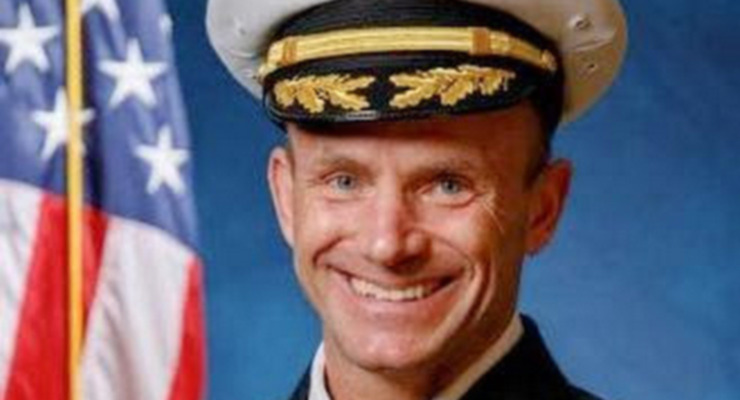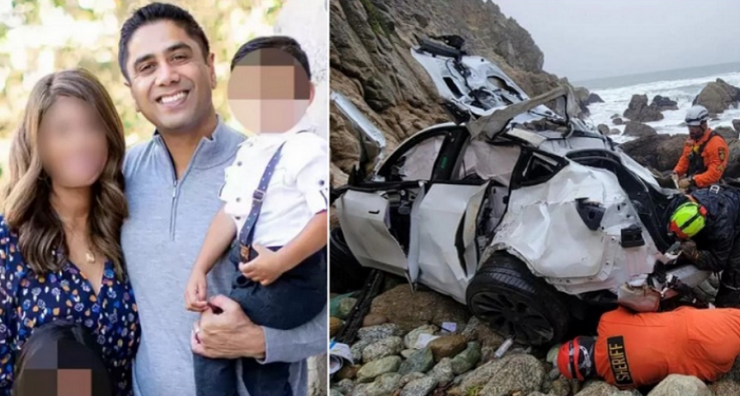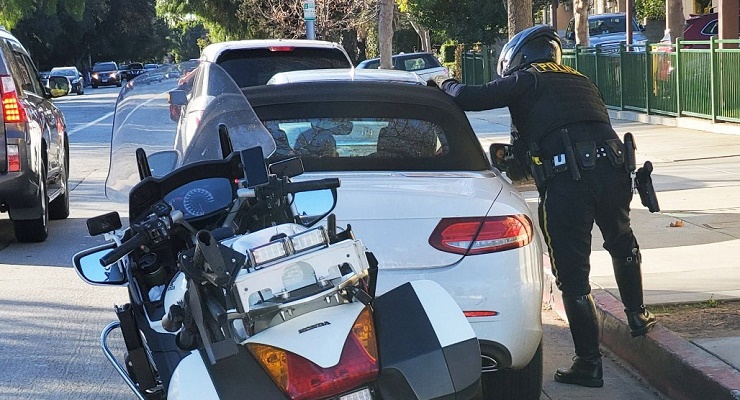
Pasadena Now spoke with Pasadena Fire Chief Chad Augustin Monday on the heels of his department’s quick knockdown of a 1.5-acre brush fire in East Pasadena over the weekend. Not far from Pasadena, Los Angeles County firefighters were working Monday to surround a 35-acre brush fire in Duarte while the Sheep Fire Incident northeast of Wrightwood grew from its ignition point to over 900 acres by Monday morning, according to CAL FIRE.
Pasadena Now: Is there actually such a thing as ‘fire weather’? That’s a phrase that seems to be at the tip of everyone’s tongue right now as the weather turns hot and dry.
Chief Augustin: There is. We used to have ‘fire seasons.’ They were traditionally in the mid-to-late summer into the early fall. And as we’ve seen over the last few years, it is now literally almost year-round. When we think of fire weather, we think of high heat, low humidity and strong winds, and here in Southern California, we think of the Santa Ana winds. With the fuel moistures being so low, we’re seeing fire conditions in June that we would normally see in August or September, which just makes me nervous for another devastating wildfire season.
Pasadena Now: Am I correct in saying there are two primary regions in Pasadena that are most likely to be affected someday by brush fires. One would be the Hastings Ranch area and the second would be the San Rafael Hills?
Chief Augustin: You’re spot on. And while we have lots of areas that are, I’ll say, in a high fire risk area, those two are definitely at the top.
Pasadena Now: I was really struck by your early focus on developing an evacuation plan for the San Rafael Hills. Is that something that you noticed when you first came here?
Chief Augustin: I looked at that area and thought, oh my goodness, this is Pasadena’s version of the Oakland Hills. If you recall, in 1990 they had a devastating fire and there was poor water supply, poor access and egress. Homes that were beautiful homes up in the hills. And when I first got to Pasadena, I looked up and that’s the first thing I thought of. So I asked my team, Where is our evacuation plan? And I was told there isn’t one.
So we started working on one. And as we presented that out, we quickly heard — and rightfully so — from our community and members of the City Council that our entire city deserved to have an evacuation plan.
We had worked for nine months just on a small portion of the city. And we knew if we were going to accomplish a citywide evacuation plan, that would probably take us two to three years at a minimum. So what we did was we were able to prioritize existing funds within the Fire Department and we hired a consultant, and it was Council-approved a couple weeks ago. We’re just going through the final sign-off of the legal portions of that contract. We’ll be working with a consultant with a really aggressive timeline for a citywide evacuation plan by the end of this year. I hope we’ll never need it, but it gives me peace knowing that we’ll have a plan in place that our residents and all of our community can access if need be.
Pasadena Now: You mentioned water supply. Is that something that’s going to have to be addressed and beefed up for the San Rafael Hills?
Chief Augustin: Pasadena has a good water supply overall. But if we have fires in multiple areas or a very large demand for water, then water supply can be scarce. We’re very cognizant of that. We’re lucky to have Pasadena Water, our own water company, here in our backyard. We do training with them — multiple times, actually, just in my first year here — how we can better partner and in an emergency how they can support us. That’s been great. We’re really trying to look at every possibility in the event of a disaster or a large fire and say ‘what limiting factors would there be for us?’ And of course, water supply is one of them. And then we say, okay, ‘what can we do to partner and ensure that in that emergency we maximize the amount of water we have?’
Pasadena Now: Brush clearance is a big factor in fire control and residents have a real job themselves on their own properties in urban wildlife interface areas around town. Where do you stand on checking brush clearance right now?
Chief Augustin: We are 99.8% completed with our annual brush clearance and inspections. We do almost 4,000 inspections a year and I just got the numbers last week and we’re within a couple dozen of being completed. We were really aggressive this year. We got after it early, just because of the fears of another aggressive wildfire season. And so our crews have worked really hard on that.
From some of the feedback I’ve heard, it’s the best and most aggressive action that has been taken in years.
Pasadena Now: During the fire season typically in years past PFD crews have been under mutual aid assignments quite often. Do you fully expect to have a certain percentage of your personnel away fighting major fires elsewhere almost continuously over the next four or five months?
Chief Augustin: I do. Usually, when we get a request we expect that we’re going to be gone for a minimum of 14 days, and that can be extended to 21. So it’s a big commitment for, first off, the employee and their family to be gone for that many days straight. Usually in the earlier part of the summer, it’s Northern California that has the larger wildfires and we’re sending crews and support up to Northern California. And then in the late summer and early fall with our Santa Ana’s, Southern California’s having the more devastating fires and Northern California is sending down resources. But I think this year, all bets are off. It’s just so dry with the drought. But our very first priority is ensuring that the residents of Pasadena are taken care of and that we are able to project and staff all of our fire stations. And we then make ourselves available for any resources to go out the door to support the rest of the state.
Pasadena Now: Of course, it’s not only personnel, it’s also equipment that goes up north. Some pretty important pieces of equipment leave town. True?
Chief Augustin: That is correct. And we make sure that again we look at Pasadena first and the water tender is a good example. It’s a rarity for us to send a water tender out the door because we only have one in Pasadena, but we do send fire engines. We do send single resources. More and more we’re also sending what’s called a REMS team. It’s a rapid extrication [team]. You can think of them being like a safety officer on a fire, it’s for personnel with all the abilities to perform rescue, whether it’s another firefighter or a member of the public, but really they’re in place for firefighter safety. We’ve sent those out the door because we have multiple crews that have that highly specialized training. This year we’re better staffed with personnel. Fire engines may be a limiting factor. But we take it one day at a time.
Pasadena Now: During the fire season, we notice PFD is spending a lot of time in Arcadia and San Marino and South Pasadena, and those departments are here a lot. Do local departments backup each frequently?
Chief Augustin: We do. And I always like to brag and say, California has the best mass mutual aid system in the country, really the world. But even as we look locally, that two-acre fire yesterday, and we had Pasadena, we had San Marino, we had South Pasadena, we had LA county all on that fire. It’s just a testament that it doesn’t matter the boundary or borders, it’s how can we all support each other? If we need 10 fire engines, we don’t have 10 fire engines. And so those additional fire engines are going to come from other cities to support us. Then vice versa we’ll do the same. And on a day like yesterday, when the majority of our fire engines are on that fire for a couple hours, other cities send additional fire engines [into] our fire stations. So it works out well.
Pasadena Now: We’ve covered an awful lot in a pretty short period of time. What haven’t I asked you or talked about that you think should be said?
Chief Augustin: I always like to go back to individual responsibility and individual preparedness. Having a plan, if you need to evacuate. Being self-sufficient for 24 to 72 hours with a ‘go bag.’ Having a primary and secondary evacuation route from your house. And most importantly, just being prepared. If our residents can do that and they know what they’re going to do in the event of an emergency, they’re really part of the solution and not part of the problem. And that’s super important.
—Chief Augustin was interviewed by Pasadena Now publisher James Macpherson.














 0 comments
0 comments


